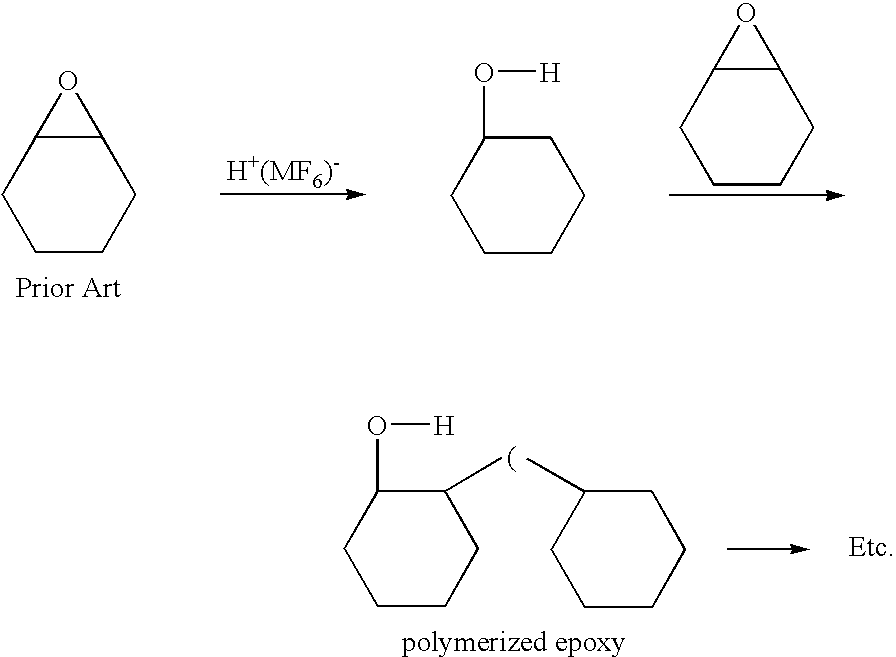Photo-crosslinkable polyolefin compositions
a polyolefin and composition technology, applied in the field of polymer compositions and articles, can solve the problems of high-voltage “electron beam” equipment, high cost and potential danger, and limited product thickness and configuration
- Summary
- Abstract
- Description
- Claims
- Application Information
AI Technical Summary
Benefits of technology
Problems solved by technology
Method used
Image
Examples
example 1a
[0084]A functional ethylene terpolymer (E-MA-GMA) containing 24% by weight methyl acrylate and 8% by weight glycidyl methacrylate and of density 0.94 g / cm3 and melt flow index 6 dg / min. was blended with an ethylene propylene diene terpolymer (EPDM) of density 0.908 g / cm3 and melt flow index 1.0 dg / min., a cationic photoinitiator comprising triarylsulphonium hexafluorophosphate in propylene carbonate, a free-radical photoinitiator comprising 1-hydroxy-cyclohexylphenylketone and benzophenone, and a trimethylolpropane triacrylate crosslinking promoter, in the amounts shown in Table 1. The liquid cationic photoinitiator, free-radical photoinitiator and crosslinking promoter were imbibed into a porous HDPE carrier at a ratio of approximately 2:1 to aid blending with the polymeric components. Blending was accomplished with a tumble blender, ribbon blender, high-speed blender, or multi-component feeding system.
[0085]The blended components were fed through a 24:1 L / D single-screw extruder, ...
example 1b
[0088]The molten extruded sheet of Example 1a was wrapped circumferentially around the surface of a rotating steel pipe previously coated with an epoxy-based corrosion protection layer, and UV crosslinked using a series of UV lamps positioned circumferentially around the pipe.
example 1c
[0089]The composition of Example 1a was extruded through an annular die, the tube or pipe thus formed being cooled and UV crosslinked as described above. The crosslinked tube or pipe may subsequently be rendered heat-shrinkable by re-heating, stretching, and cooling as described above.
PUM
| Property | Measurement | Unit |
|---|---|---|
| wavelength | aaaaa | aaaaa |
| temperatures | aaaaa | aaaaa |
| thickness | aaaaa | aaaaa |
Abstract
Description
Claims
Application Information
 Login to View More
Login to View More - R&D
- Intellectual Property
- Life Sciences
- Materials
- Tech Scout
- Unparalleled Data Quality
- Higher Quality Content
- 60% Fewer Hallucinations
Browse by: Latest US Patents, China's latest patents, Technical Efficacy Thesaurus, Application Domain, Technology Topic, Popular Technical Reports.
© 2025 PatSnap. All rights reserved.Legal|Privacy policy|Modern Slavery Act Transparency Statement|Sitemap|About US| Contact US: help@patsnap.com


